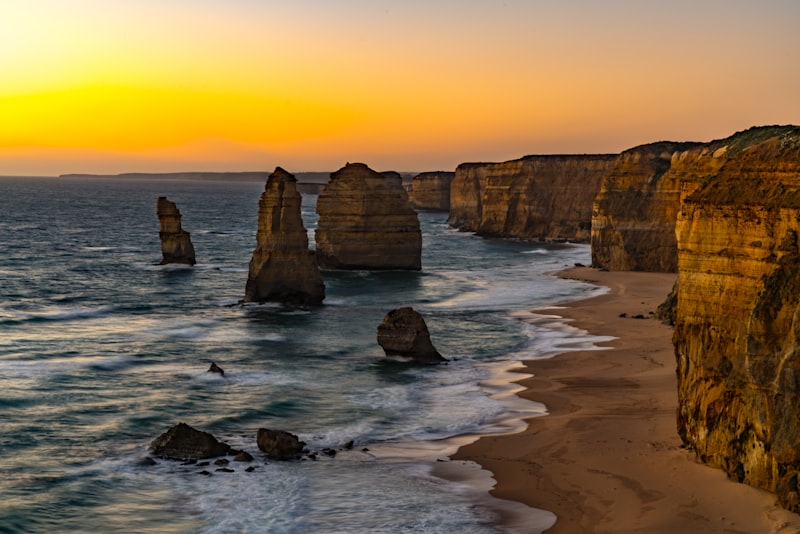Beneath the waves lie more than just creatures. Ancient shipwrecks rest silently on the ocean floor, each telling a tale of voyages past. These submerged relics not only captivate with their historical significance but also provide a glimpse into maritime mysteries and the bravery of those who sailed the seas.
Moreover, coral reefs emerge as vibrant underwater cities, bustling with life. They are not just geological formations but entire ecosystems supporting a myriad of marine species. The Great Barrier Reef, for instance, stretches majestically along Australia’s coast, showcasing the breathtaking diversity of underwater life. Its kaleidoscope of colors and shapes, from neon-bright fish darting among coral gardens to graceful sea turtles gliding gracefully, underscores the delicate balance of nature below the surface.
Delving deeper, hydrothermal vents emerge as nature’s own geysers, spewing superheated water into the frigid depths. These vents, often found near volcanic activity on the ocean floor, harbor extremophiles—organisms thriving in conditions once thought uninhabitable. Their discovery challenges our understanding of life’s resilience and evolution in the most unexpected corners of our planet.
‘Oceanic Wonders: Amazing Discoveries Below the Waves’ invites us to ponder the vastness of our oceans and the countless secrets they hold. From enigmatic creatures to ancient artifacts and ecological marvels, each discovery beneath the waves evokes wonder and underscores the importance of ocean conservation. As we continue to explore and understand these oceanic wonders, we embark on a journey of discovery that enriches our understanding of Earth’s last frontier.
Lost Cities of the Deep: Ancient Civilizations Beneath the Ocean
Diving into the realm of underwater archaeology reveals a world where history meets the sea. The search for lost cities like Atlantis or the sunken ruins of Dwarka off the coast of India isn’t just the stuff of legends—it’s a quest to understand our past in a whole new light. These cities, swallowed by the ocean millennia ago, offer glimpses into cultures and societies long forgotten.
Take the city of Heracleion, discovered off the coast of Egypt. Once a bustling hub of trade and culture, it now lies submerged, its artifacts and statues preserved in the silt. As archaeologists painstakingly uncover relics from its watery grave, they piece together the story of a city lost to time.
What makes these discoveries even more astounding is their preservation. Submerged beneath the ocean’s depths, these ancient sites are often remarkably intact. From pottery to monumental architecture, each artifact serves as a piece of a larger puzzle, shedding light on how ancient civilizations lived and interacted.
The allure of lost cities isn’t just academic—it’s also about the thrill of exploration. Imagine descending into the blue abyss, your flashlight revealing walls adorned with ancient carvings or streets once trodden by merchants and sailors. It’s a journey into history where every dive promises the potential for new revelations.
Yet, these discoveries also raise questions. What cataclysmic events led to these cities’ submergence? How did people adapt to environmental changes over centuries? The sunken ruins challenge us to rethink our understanding of history and our relationship with the oceans.
In essence, exploring the lost cities of the deep isn’t just about discovering ancient artifacts; it’s about connecting with our shared human heritage. These submerged civilizations remind us of the impermanence of great cities and the resilience of human civilization throughout the ages.
Secrets of the Abyss: Unveiling Nature’s Hidden Marvels
One of the most astonishing marvels of the abyss is its inhabitants. From the ghostly forms of anglerfish, with their luminescent lures dangling like fishing rods in the night, to the graceful movements of giant squids, these creatures defy the conventions of life as we know it. They have evolved unique adaptations to thrive in a realm where sunlight never penetrates, relying instead on senses tuned to the faintest vibrations and the dimmest lights.
The abyssal landscape itself is a wonder of geological forces. Vast underwater mountains rise from the seafloor, their peaks often unexplored by human eyes. These seamounts harbor ecosystems rich in biodiversity, supporting species found nowhere else on Earth. Hydrothermal vents dot the ocean floor like chimneys of another world, releasing mineral-rich waters that nurture thriving communities of tube worms, crabs, and shrimp.
Exploring the Secrets of the Abyss also unveils mysteries that challenge our understanding of life and evolution. How do organisms survive in extreme cold and high pressure? What secrets do the abyssal plains hold about Earth’s geological history? These questions propel scientists on expeditions to unravel the mysteries hidden in the darkest corners of our planet.
The Secrets of the Abyss: Unveiling Nature’s Hidden Marvels represent an ongoing journey of discovery and awe. They remind us of the vastness of our planet and the resilience of life in the face of extreme conditions. As we continue to explore and study these depths, each revelation sparks new questions and deepens our appreciation for the wonders of the natural world.
Mysteries of the Deep Sea: Creatures That Glow in the Dark

Imagine diving into the ocean at night and witnessing the sea come alive with light. It’s like stepping into a fairy tale, where the darkness is illuminated by nature’s own enchanting fireworks display. But how do these creatures create their own light? It’s a fascinating process involving chemistry within their bodies. Bioluminescence occurs when luciferin, a light-emitting compound, reacts with oxygen in the presence of luciferase, an enzyme. This natural light show not only helps these creatures attract prey or mates but also serves as a defense mechanism, distracting predators or even making them less visible in the depths.
One of the most famous bioluminescent creatures is the anglerfish, known for its glowing lure that dangles from its head like a fishing pole. This lure, which emits light produced by bioluminescent bacteria, attracts smaller fish that are then swiftly captured by the anglerfish’s enormous jaws. It’s a prime example of how bioluminescence can be both a hunting tool and a means of survival in the abyssal plains where food is scarce.
But it’s not just anglerfish that light up the deep sea. There are myriad other creatures, from tiny planktonic organisms like dinoflagellates to larger predators like squid and jellyfish, that possess the ability to glow. Each species has its own unique way of using bioluminescence, whether it’s to communicate with others of their kind, startle potential threats, or simply navigate the dark waters.
Scientists continue to uncover new species and new mysteries surrounding bioluminescence in the deep sea. The more we explore, the more we realize just how vital and extraordinary these glowing creatures are to the ocean ecosystem. They remind us that even in the darkest depths, there is beauty and innovation waiting to be discovered.
Underwater Volcanoes: Unseen Forces Shaping Oceanic Landscapes

Imagine the ocean as a canvas, constantly molded by unseen forces. Underwater volcanoes act as sculptors, crafting mountains, ridges, and even islands beneath the waves. Their eruptions release minerals and nutrients into the water, enriching marine ecosystems and fostering unique habitats for diverse species of marine life.
The formation of underwater volcanoes begins deep within the Earth’s crust, where tectonic plates diverge or converge. When these plates separate, magma from the mantle rises to fill the void, creating new crust and forming underwater mountain ranges known as mid-ocean ridges. In contrast, converging plates force one plate beneath another, melting it and triggering explosive volcanic activity.
These volcanic eruptions are not just geological events; they influence global processes such as the carbon cycle and ocean circulation. The minerals released during eruptions stimulate the growth of phytoplankton, which absorbs carbon dioxide from the atmosphere, playing a critical role in regulating Earth’s climate.
Furthermore, underwater volcanoes hold significant scientific interest. Researchers study them to understand the Earth’s internal processes better and to explore potential mineral resources that lie beneath the ocean floor. They also provide insights into the origins of life on Earth, as similar environments might have existed when life first emerged billions of years ago.
Frequently Asked Questions
What are bioluminescent organisms, and how do they light up the ocean depths?
Bioluminescent organisms are creatures that produce light through a chemical reaction in their bodies. They light up the ocean depths by emitting a blue or green glow, which helps them attract prey, defend against predators, and communicate with others of their species. This natural phenomenon is crucial in marine ecosystems, contributing to the balance and biodiversity of underwater life.
What are hydrothermal vents, and why are they important in oceanic research?
Hydrothermal vents are fissures on the seafloor that release superheated, mineral-rich water due to volcanic activity. They are crucial in oceanic research because they support unique ecosystems where extremophile organisms thrive, offering insights into biological adaptations and geochemical processes in extreme environments.
How do scientists explore and study underwater ecosystems?
Discover how scientists explore and study underwater ecosystems, using specialized equipment like submersibles and remotely operated vehicles (ROVs). They collect samples, conduct visual surveys, and analyze data to understand marine biodiversity and ecological processes.
How are shipwrecks preserved underwater, and why do they interest researchers?
Learn how shipwrecks are preserved underwater and why they fascinate researchers. Discover the techniques used to protect these historical sites from decay, and explore the valuable insights they offer into maritime history, navigation, and cultural heritage.
What are some of the most fascinating marine species discovered in the deep ocean?
Explore a diverse array of deep-sea marvels with our guide to the most captivating marine species found in the ocean’s depths. From luminous anglerfish to elusive vampire squids, discover nature’s wonders thriving in the depths of the sea.


